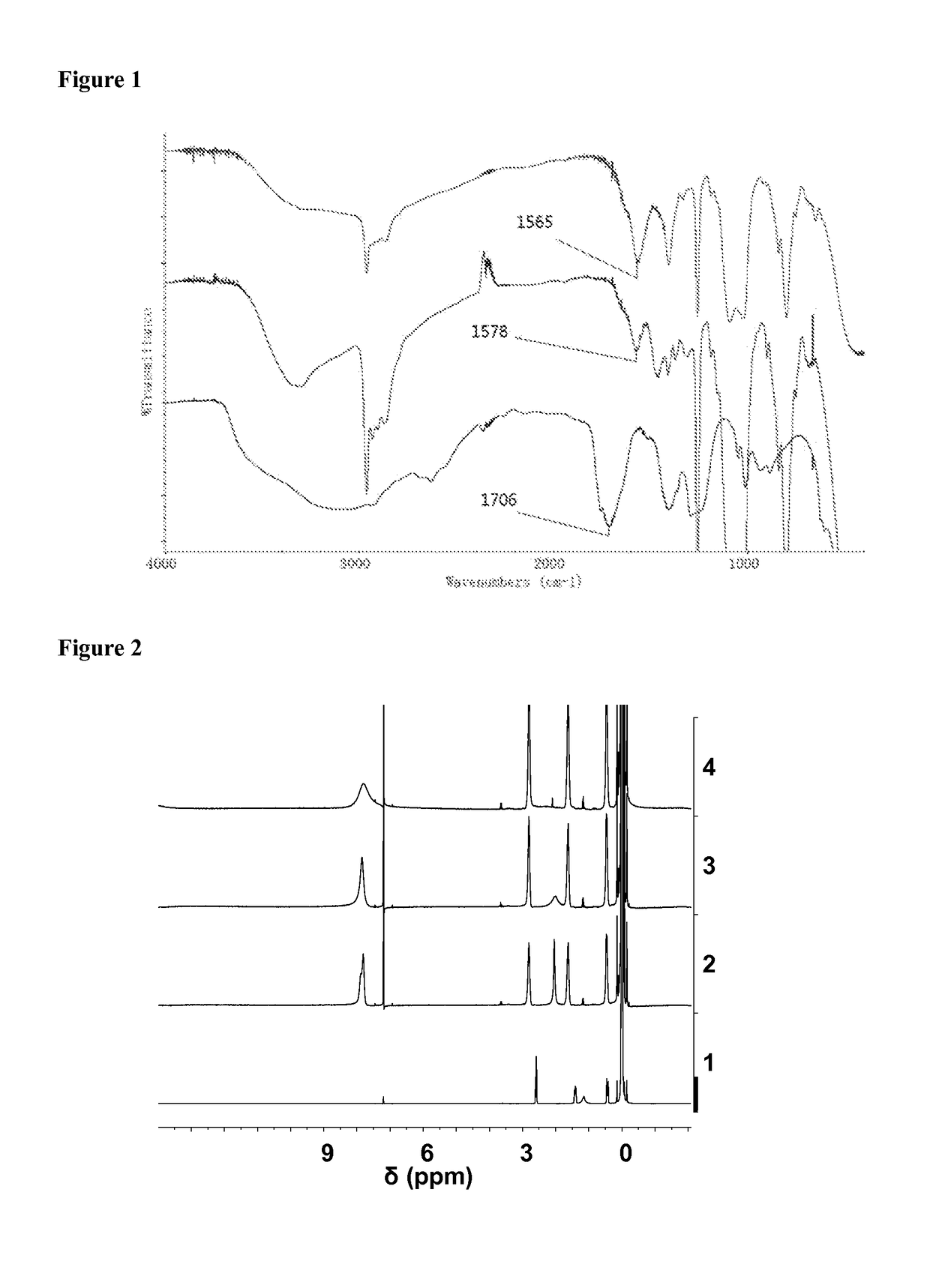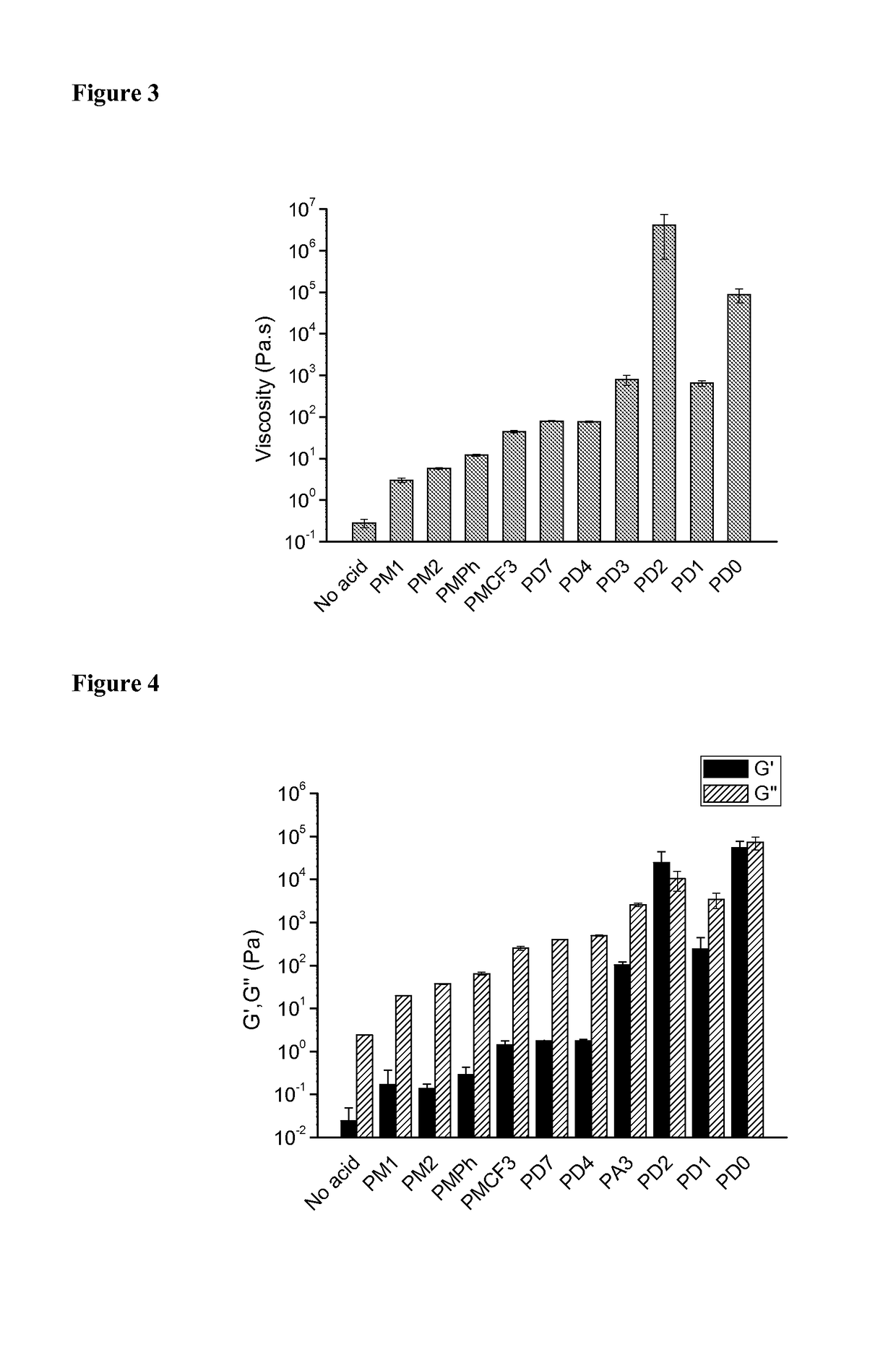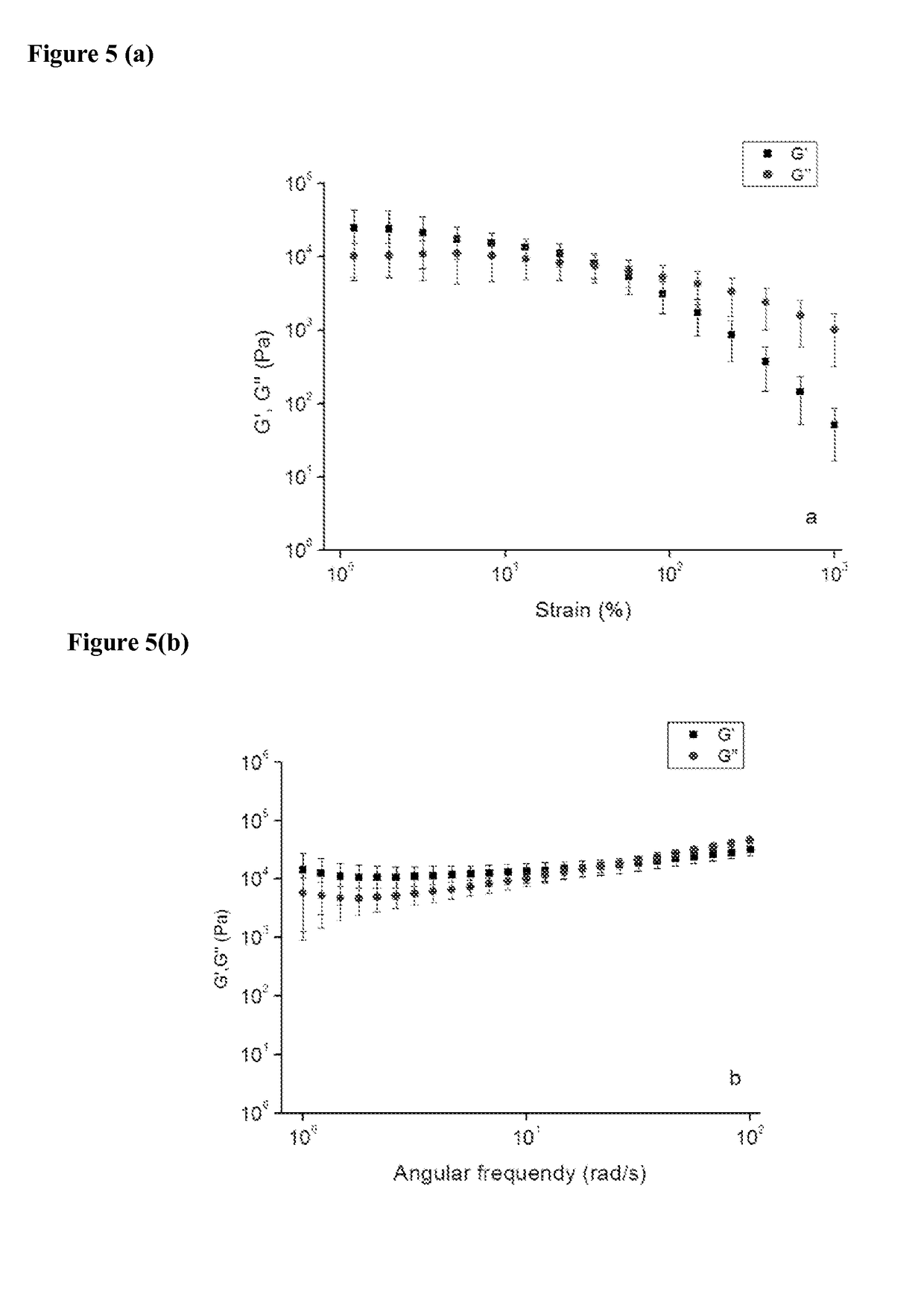Amino-substituted polysiloxanes combined with polymerizable and unpolymerizable organic acids
a technology of substituting polysiloxane and organic acid, which is applied in the direction of cell components, pharmaceutical non-active ingredients, adhesives, etc., can solve the problems of disadvantages, disadvantages, and relatively low viscosity of polysiloxane, and achieve excellent heating stability, low surface tension, and high flexibility
- Summary
- Abstract
- Description
- Claims
- Application Information
AI Technical Summary
Benefits of technology
Problems solved by technology
Method used
Image
Examples
example 1
General Procedures; 6-7PSil Carboxylates
[0139]Materials. (3-Aminopropyl)methylsiloxane-co-dimethysiloxane copolymer with 6-7% monomer units with amino groups (6-7PSil; Gelest, Inc.; characterization data from supplier: by >205° C., mp2EDA; Siltech, Inc.; characterization data from supplier: molecular weight: 1700 and one primary amino and one secondary amino group in 23% of the monomer units) were used as received. Acetic acid (EM Science, 99.7%), propionic acid (Mallinckrodt, AR, 99.95%), trifluoroacetic acid (Acros, 99%), benzoic acid (Sigma-Aldrich, 99%), acrylic acid (Aldrich, 99%), oxalic acid (Acros, 98%), malonic acid (Sigma-Aldrich, 99%), succinic acid (Aldrich, 99+%), glutaric acid (Aldrich, 99%), azelaic acid (Aldrich, 98%), succinic acid (Aldrich, 99+%), glutaric acid (Aldrich, 99%), azelaic acid (Aldrich, 98%), vinylbenzoic acid (Fisher, 97%), azobisisobutyronitrile (AIBN, Aldrich, 98%), tert-butylamine (Aldrich, 98%), tributylamine (Aldrich, 98%) 1,4-dioxane (Sigma-Aldr...
example 2
6-7PSil Vinylbenzoate and Product of Irradiation
[0178]To further study the reaction of polysiloxane ammonium salts with acids containing poylmerizable olefins upon radiation, 6-7PSil vinylbenzoate was synthesized using vinylbenzoic acid with the same procedure with benzoic acid reported above. The 1H NMR spectrum of this product is shown in FIG. 34, in which it can be seen that the ammonium salt was synthesized successfully: four hydrogens at 7.89 and 7.32 are from benzene ring, broad peak from 7.10 to 6.77 ppm is from ammonium salt, three hydrogens at 6.71, 5.77 and 5.30 ppm are from double bond, and six hydrogens at 2.79, 1.64 and 0.45 are from propyl attached to nitrogen.
[0179]From the rheology results it can be seen that the viscosity and moduli increased after irradiation (FIG. 35 and FIG. 36), which is similar to vinylbenzoate and methacrylate systems.
[0180]Then hydrolysis of this ammonium salt was performed with the same procedure as the methacrylate system. The crude product...
example 3
6-7PSil Methacrylate and D2EDA Acrylate
[0182]The 6-7PSil methacrylate was synthesized and investigated, and it was noted that the viscosity and moduli of 6-7PSil methacrylate increased greatly after irradiation. A hydrolysis similar to that in Example 2 was undertaken of the product after irradiation. The crude product (400 mg) was mixed with 40 mL 0.25 M NaOH aqueous solution and allowed to stir for 3 h at 65° C. After vacuum filtration, one half of the liquid was dried completely to obtain a crude hydrolysis product. Other half part of this liquid was extracted with 3×50 mL ether, methylene chloride and ethyl acetate separately, then the organic layers were combined and dried with anhydrous Na2SO4 overnight, then the solvent evaporated and the residue dried in a vacuum oven at 50° C. overnight; the resulting product is termed herein the first extraction product. The water phase obtained in the first extraction was neutralized with 1 M HCl in an ice bath to pH 3 then extracted with...
PUM
| Property | Measurement | Unit |
|---|---|---|
| frequency | aaaaa | aaaaa |
| surface energy | aaaaa | aaaaa |
| temperature | aaaaa | aaaaa |
Abstract
Description
Claims
Application Information
 Login to View More
Login to View More - R&D
- Intellectual Property
- Life Sciences
- Materials
- Tech Scout
- Unparalleled Data Quality
- Higher Quality Content
- 60% Fewer Hallucinations
Browse by: Latest US Patents, China's latest patents, Technical Efficacy Thesaurus, Application Domain, Technology Topic, Popular Technical Reports.
© 2025 PatSnap. All rights reserved.Legal|Privacy policy|Modern Slavery Act Transparency Statement|Sitemap|About US| Contact US: help@patsnap.com



